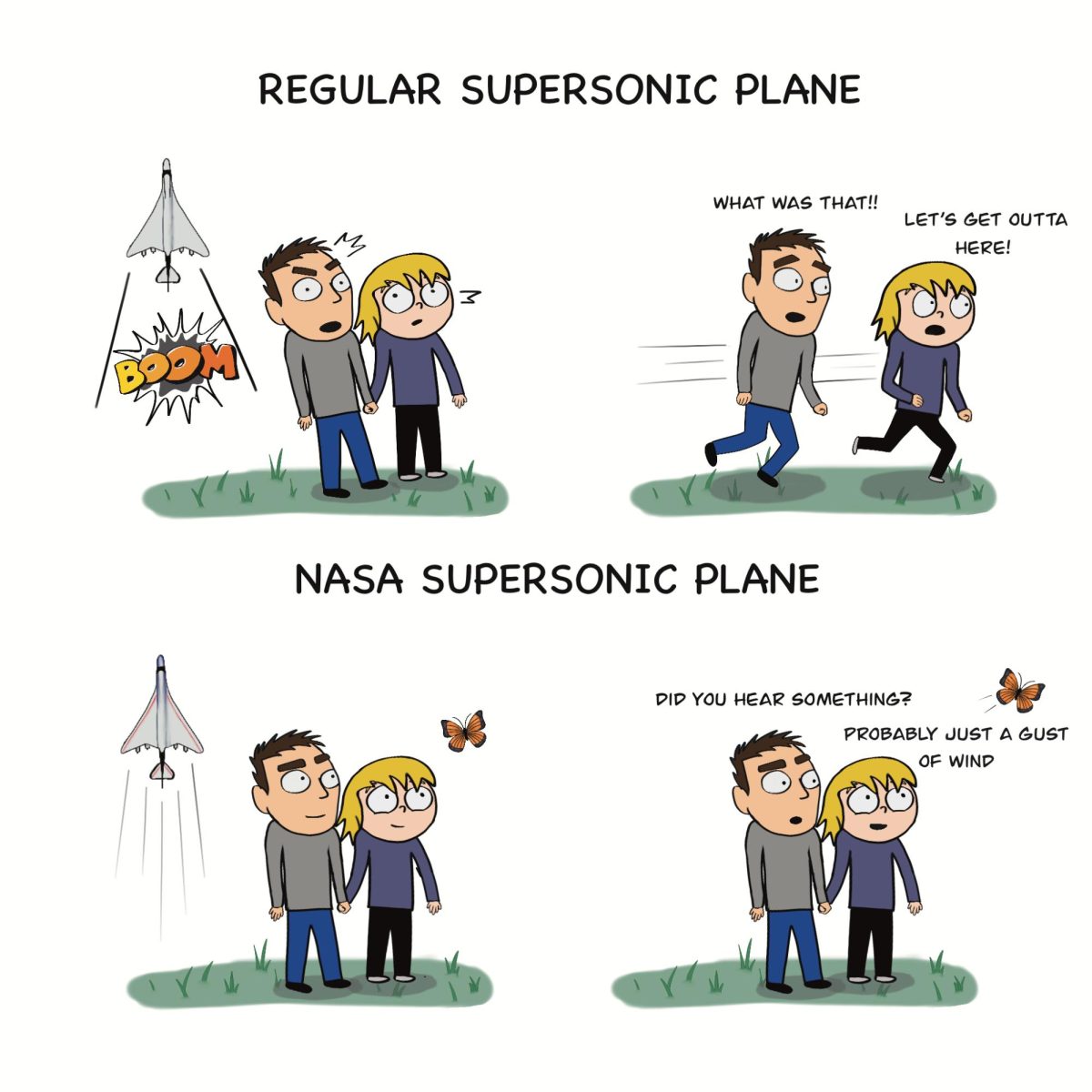Designed to show the merits of quiet Supersonic Transport, NASA and Lockheed Martin formally debuted their X-59 experimental plane on Jan. 12.
Supersonic transport over the continental US has been illegal since 1974 because of sonic booms, which occurs when a plane travels faster than the speed of sound. Sonic booms can cause damage to property, demonstrated by the 10,000 complaints of damage during Operation Bongo II –– an experiment that subjected the citizens of Oklahoma City to daily sonic booms in 1964.
The X-59 is the centerpiece of NASA and Lockheed Martin’s joint venture, the QueSST project. In an interview with Technology YouTuber Cleo Abrams, the NASA Project Lead Catherine Baum said the project’s goal is to reinstate legal supersonic transport.
“Our goal is to change that regulation, so that as long you’re below (75 dB), you can fly supersonically over land,” Baum said.
However, supersonic passenger transport existed through the Concorde, a supersonic passenger plane operated by British Airways and Air France from 1976 to 2003. It operated at speeds above Mach 2, or more than twice the speed of sound.
Junior Jack Madwed, an aviation enthusiast, said the Concorde was a marvel of engineering at the time.
“Concorde truly is an inspiration,” Madwed said. “It represents an immense technological achievement.”
The Concorde ultimately failed due to its unsustainable economic model including issues with rising fuel prices, stalled travel rates after 9/11, aging technology and high maintenance costs. Yet one of the largest factors in the Concorde’s demise was its inability to fly through profitable routes it was illegal for it to fly over much of the mainland because of the sonic booms it created.
As a result, the QueSST project began in December 2016, with the intent of demonstrating the ability to lower noise levels from sonic booms. NASA and Lockheed Martin will conduct research using the X-59 plane throughout the next few years.
The X-59 intends to reduce the infamous sonic boom to a “sonic thump” below 75 dB, whereas the Concorde produced sonic booms as loud as 110 dB, according to William Jeffrey Doebler from the NASA Langley Research Center. This comparison is roughly equivalent to hearing an alarm clock versus hearing a chainsaw three feet away.
In Cleo Abrams’ interview, Lockheed Martin Project Lead David Richardson said the X-59 accomplishes the lowered volume thanks to the plane’s unique shape.
“The bottom of the airplane is very smooth and clean,” Richardson said. “Anything that creates a bump that makes a shock that would (usually) go down, they’re all on the top,” Richardson said.
With aerodynamic components being on top, the airwaves are sent upward rather than down toward the ground, reducing the effect of sonic boom noise.
The T-tail on the rear of the plane creates its own smaller sonic boom and the airwaves of it work to help cancel out the main boom. The comically large nose, which takes up over a third of the plane’s overall length, also helps dissipate shockwaves, and keeps the plane aerodynamic enough to maintain Mach 1.4 (925 mph).
Unlike the Concorde, the X-59 is only a single-seater in its current configuration. However, the research it conducts on its missions through 2027 has the goal of proving the merit of a quiet supersonic plane, and ultimately legalizing quiet supersonic flight over the US. The research and technologies from this plane can then be transferred to a passenger supersonic plane.
However, Madwed said he is pessimistic about the future of supersonic flight.
“Bringing back super sonic transport in this day and age is simply not feasible or scalable,” Madwed said. “Although the idea seems tempting, supersonic aircraft carry too few passengers and cost far too much.”


